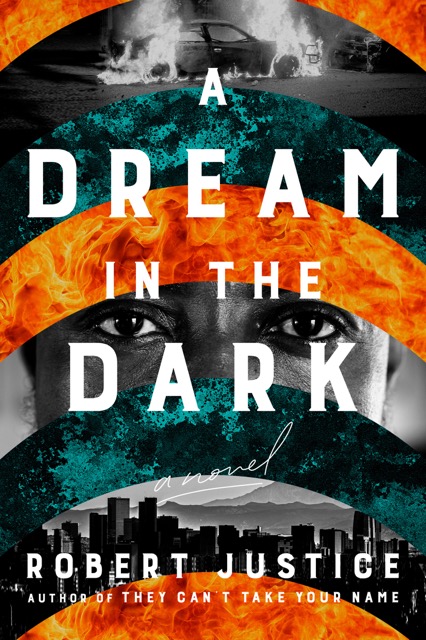Langston's Dream, King's Nightmare

In my debut novel, They Can’t Take Your Name, I sought to explore what happens to our deferred dreams. Langston Brown was a wrongfully convicted man who not only shared a first name with Langston Hughes but quoted his poetry as well.
Many have argued, and I agree, that there is a direct link between the poetry of Langston Hughes and the rhetoric of Martin Luther King Jr. Hughes’s question “What happens to a dream deferred?” had an influence on King’s dream of what America might become. It was W. Jason Miller who said, “Langston Hughes’s poetry hovers behind Martin Luther King’s speeches and sermons, the way watermarks show through bonded paper when it’s held up to the light.”
A Dream in the Dark, book two of my Wrongful Conviction Novels, is my attempt to hold the American dream up to the light so that we might wrestle with what happens when we realize our deferred dreams, only to see them become our nightmares.
 Most people know of the dream of Martin Luther King Jr., but few know of his nightmare. In 1963, King stood in the shadow of the statue of the man who authored the Emancipation Proclamation and called the nation “to live out the true meaning of its creed.” With wondrous words and compelling cadence, he delivered one of the greatest speeches of all time. He called Americans to be American, and few remained uninspired by a vision of what life could and should be. Yet only four years later, Martin Luther King Jr. spoke of the same dream in very different and disturbing terms. On Christmas Eve 1967, before his home congregation, he said, “Not long after talking about that dream, I started seeing it turn into a nightmare.” Malcolm X and James Baldwin offered similar refrains, and collectively they point us to a singular conclusion—our deferred dreams can also become our lived nightmares.
Most people know of the dream of Martin Luther King Jr., but few know of his nightmare. In 1963, King stood in the shadow of the statue of the man who authored the Emancipation Proclamation and called the nation “to live out the true meaning of its creed.” With wondrous words and compelling cadence, he delivered one of the greatest speeches of all time. He called Americans to be American, and few remained uninspired by a vision of what life could and should be. Yet only four years later, Martin Luther King Jr. spoke of the same dream in very different and disturbing terms. On Christmas Eve 1967, before his home congregation, he said, “Not long after talking about that dream, I started seeing it turn into a nightmare.” Malcolm X and James Baldwin offered similar refrains, and collectively they point us to a singular conclusion—our deferred dreams can also become our lived nightmares.
To explore this theme, I wanted to move from the fictional victim of my debut, Langston Brown, to two real-life victims in Denver who endured the nightmare of the greatest injustice in our justice system.



